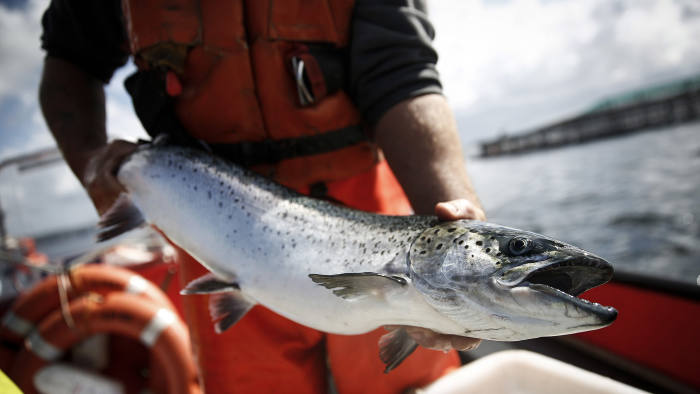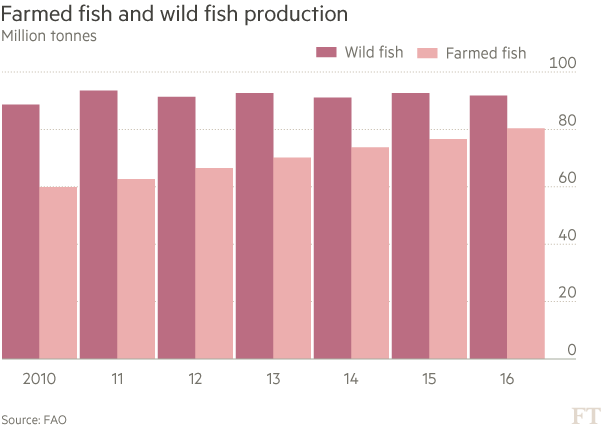
- Goose
- Cogito ergo sum
 Offline
Offline 
- Registered: 1/29/2015
- Posts: 13,427
Farmed fish on course to overtake wild catch in 2019
Farmed fish on course to overtake wild catch in 2019
Greater use in animal feed and rising human consumption reshapes industry
Global seafood will lose its status as the only remaining food sector supplied chiefly by nature, as businesses pour investment into fish farming.
Farmed fish production is expanding 4 to 5 per cent a year, putting it on course to eclipse the output of wild fishing as soon as 2019, according to the UN Food and Agricultural Organization.
Appetite for fish in both developed and emerging markets is rising as more consumers choose it for health benefits. Demand for fish used in animal feed has also increased while the volume of fish caught in the wild has been stagnant since the early 1990s.
“This is similar to what took place in agriculture many centuries ago,” said Audun Lem, deputy-director of FAO’s fisheries and aquaculture department. “The overall impact on nutrition, food security and human development will be equally large.”
The trend has prompted a range of companies to muscle in to the farmed fish industry. Cargill, the leading US agricultural trader which handles everything from wheat to poultry, bought Norwegian fish feed supplier Ewos for €1.35bn two years ago, while Japanese conglomerate Mitsubishi paid $1.4bn for Cermaq, a Norwegian salmon producer.
The FAO’s forecast is a significant change from its last prediction three years ago, when the UN agency saw farming overtaking wild catches in 2021. But the sharp increase in fish in animal feed helped change the calculus. Farmed fish became the chief source of fish consumed by humans in 2014.
At its current pace, the annual output from the farmed fish industry will rise above 90m tonnes in two year’s time, according to the FAO, which says that almost a third of the ocean’s wild fishing areas have been fished beyond sustainable limits.
However, the growth in fish farming has brought its own challenges. Salmon and shrimp, two of the most valuable seafood products, have been affected by problems including disease. Salmon prices hit record levels in 2016 because of a sea lice problem which can kill the fish. Prices have remained high and even an increase in supply over the next two years is unlikely to be sufficient to bring prices back, the FAO cautioned.
Aaron McNevin, director of sustainable food and an aquaculture specialist at the conservation NGO World Wildlife Fund, said that further investment in new farms and technologies is likely to add to costs for the industry.
However, with survival rates for farmed fish typically lower than livestock or poultry, a 10 per cent improvement in survival rates would mean “a massive increase in product,” said Mr McNevin.
We live in a time in which decent and otherwise sensible people are surrendering too easily to the hectoring of morons or extremists.
 1 of 1
1 of 1
